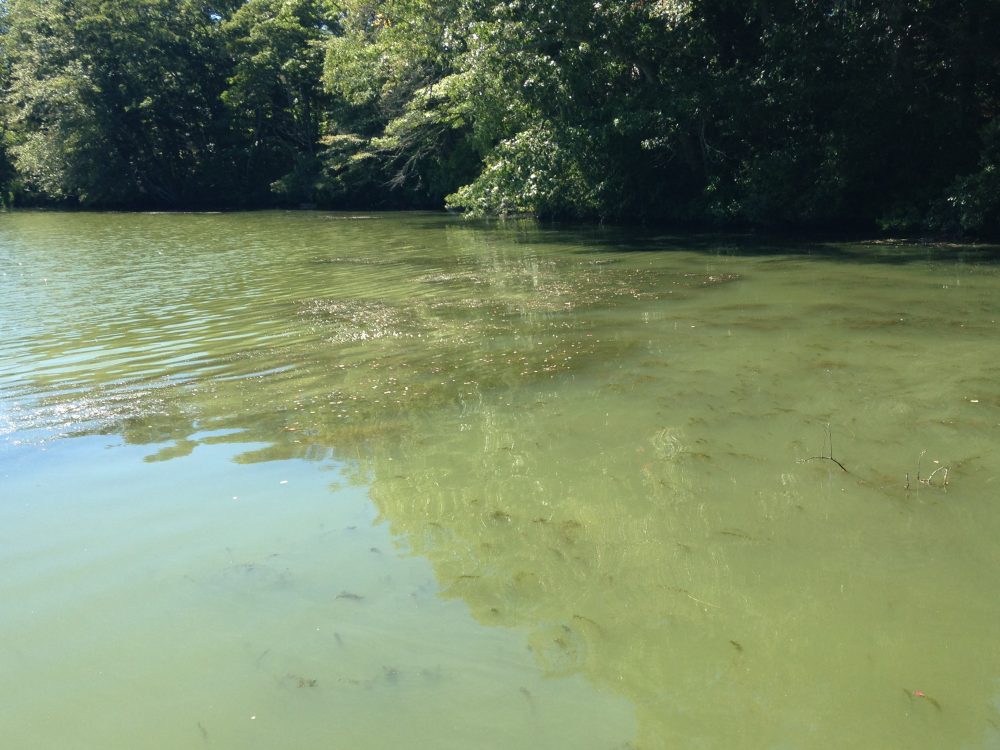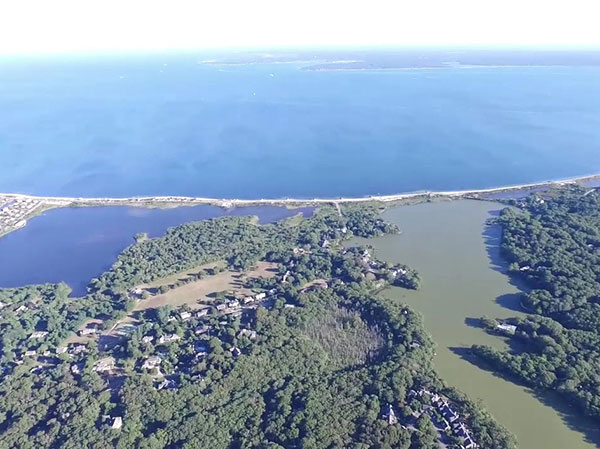The massive blue-green algal bloom impacting Oyster Pond is not going away despite our initial efforts working with the Town to increase the outflow of Trunk River. The bloom is caused by a combination of excess nutrients (phosphorus and nitrogen), sunlight, low-water or low-flow conditions and warm temperatures.

Dr. Aimlee Laderman, Lecturer at the School of Forestry and Environmental Studies at Yale University and a limnologist at the Marine Biological Laboratory, looked at photographs of the algae in the pond and identified it as a very dense bloom of freshwater blue-green Cyanophyta, indicative of severe eutrophication.
OPET is working vigorously to alleviate the situation and find a short term solution to help the pond. Two things are needed to improve the water quality – rain and lots of it to dilute the nutrient pollution and in-flow from Vineyard Sound to bring in salt water to restrict the growth of this freshwater algae. OPET is working with local scientists and engineers to design a plan to allow salt water into the pond to take to the Town for their approval.
In the meantime, OPET thought it prudent to warn our Oyster Pond neighbors to limit contact with the water. In some instances, cyanophyta blooms can sicken people and pets and cause skin rashes, eye irritation, and possible gastrointestinal distress when ingested in large quantities. Some Cyanophyta blooms can also cause the death of fish. This is more likely due to the simple lack of oxygen rather than the effects of the cyanophyta. As the algae overgrow and die, the oxygen in the water column disappears.
The Charles River is also experiencing a cyanobacteria bloom and public officials there have warned the public to avoid contact with the water as it is difficult to determine if a bloom can cause health problems.
Therefore, as a precaution, we suggest you and your pets avoid contact with the water and thoroughly rinse contacted areas after exposure.

What a startling difference in this aerial view between the blue Salt Pond and pea-green Oyster Pond! Salt Pond has far fewer houses in its watershed and therefore far less nutrients polluting its water.
As stated above, we are strenuously working for a quick, emergency solution to the pond’s current state. However, this bloom brings into focus the deeper underlying problems with Oyster Pond — there is too much nitrogen and phosphorus from septic systems polluting the pond. In the long run, we must prevent another algal bloom by capturing these nutrients before they enter the pond. Either a sewer system must be installed or septic systems upgraded to include a denitrifying component. The Town is continuing to study what option will work best for the Oyster Pond watershed.

